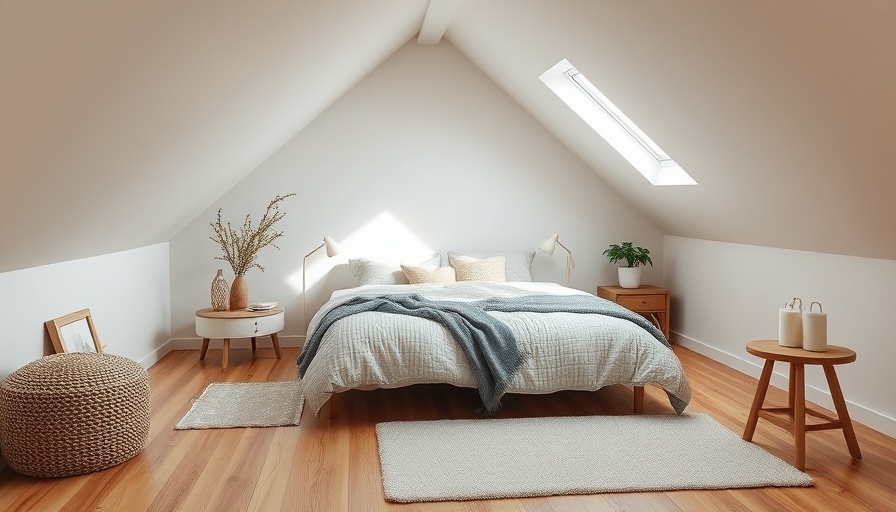
Unlock the Potential of Your Attic: Innovative Ideas That Inspire
Your attic doesn't have to remain a forgotten space filled with dusty boxes. With a splash of creativity and the right tools, it can be transformed into a stylish and functional part of your home. Whether you're looking to add value, create much-needed space, or simply beautify your home, upgrading your attic is a smart choice. This guide dives into 13 unexpected attic spaces that you’ll adore.
Maximizing Attic Storage with Built-In Solutions
One of the greatest advantages of transforming your attic is the opportunity for built-in storage. Utilize low gable walls and the angles created by steep-pitched roofs to install shelves, cabinets, and other storage solutions that keep your space organized.
Consider how built-in storage can not only house your belongings but also serve as stylish design features. For example, bookshelves can double as safety rails, combining form and function while adding an aesthetic appeal. This approach ensures that even the most awkward spaces are used effectively.
Illuminating Your Attic: The Importance of Natural Light
Even the darkest attics can shine with the right lighting choices. If your attic lacks windows, consider light paint colors, recessed lighting, and sheer window treatments to create an airy feel. These elements can visually expand the space and make it feel inviting.
Moreover, strategically placed mirrors can reflect light around the room, improving its brightness and ambiance. This simple trick can make your attic a place where you want to spend time, whether it’s a cozy reading nook or a vibrant home office.
Create a Luxurious Bathroom Retreat
Did you know that your attic space can accommodate a chic bathroom? Depending on the height available, you can cleverly design an elegant bathroom that offers both functionality and style. Using the highest ceiling point for a full shower allows you to maximize space effectively.
Smart placement of fixtures will ensure you maintain flow and comfort, making even the smallest spaces feel luxurious. Pairing thoughtful layout decisions with beautiful finishes will result in a stunning retreat.
Separation Techniques: Defining Your Attic Space
For those looking to create distinct areas within their attic, consider partitioning the space. This can effectively hide clutter or give privacy to different functions—be it a workspace, relaxation area, or sleeping nook.
Partitions don't have to be permanent; they can be screen dividers, bookshelves, or curtains that let you adjust the openness of your space as needed. This versatility fosters an adaptable environment suitable for various activities.
Building an Entrance That Wows
Enhance your attic's entrance with space-saving pull-down stairs that add a touch of intrigue. This thoughtful design choice not only conserves space but also ensures safety when accessing upper areas. Oftentimes, the journey to a transformed attic begins here, so make it as inviting as the space itself.
Create an Enchanting Playroom
For families, an attic can become the ultimate playroom. Allow your children's imaginations to run wild in a whimsical space filled with toys, games, and creativity. You might consider colorful themes, creative decor, and multifunctional storage solutions that keep the space organized.
This kind of playroom can inspire joy, creativity, and bonding among family members, making the attic a cherished space in your home.
Elevate Your Reading Experience with a Nook
Picture this: a cozy reading nook in your attic, complemented by plush seating and warm lighting. Imagine curling up with your favorite book in a serene environment. This can be achieved by cleverly designing a corner that captures natural light and maximizes comfort.
Incorporate built-in bookshelves to not only store literary treasures but also enhance the decor with style. The right elements will celebrate your love of reading while creating an inviting escape.
Embracing the Unique Features of Your Attic
Your attic's beams and trusses tell a story of craftsmanship and architecture. By embracing these features rather than hiding them, you can create a warm, rustic atmosphere that enhances your home's character.
Incorporate features like exposed beams or original woodwork into your design aesthetic. These elements not only add visual interest but also connect your attic to the history of your home.
DIY Projects for Affordable Attic Upgrades
For the hands-on homeowner, the prospect of transforming your attic can also be an opportunity to engage in DIY projects. Follow tutorials and guides on constructing shelves, creating partitions, or adding finishes yourself to keep costs down while adding personal flair.
Building your own furniture or storage solutions fosters a sense of accomplishment and can often result in unique pieces tailored specifically to your space.
Realizing the Value of Your Attic Upgrade
Investing in your attic yields meaningful returns, whether through increased property values or enhanced daily life quality. Consider the potential for your attic when planning a renovation; think not only of aesthetics but also of the space's utility.
As you contemplate upgrading your attic, weigh the options that best suit your needs and lifestyle, ensuring a seamless and valuable integration into your home.
Now’s the time to explore the creative possibilities that your attic holds!
 Add Row
Add Row  Add
Add 



Write A Comment